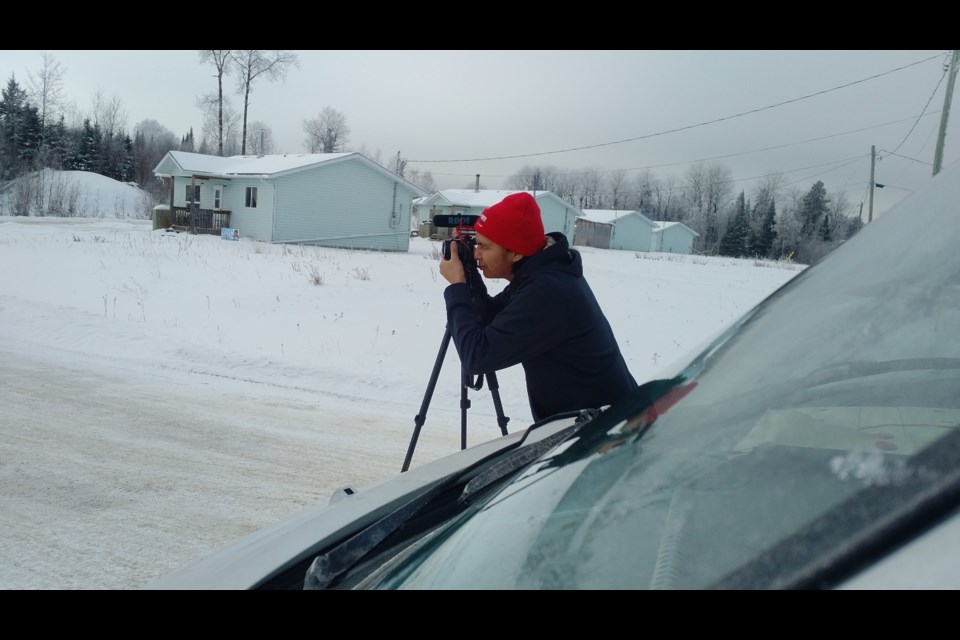Research Matters highlights the important work of researchers at Lakehead University
After nearly a decade working with a remote First Nation on different projects, Martha Dowsley's most recent effort was something much simpler: put video cameras in the hands of young people and give them the freedom to tell stories close to their hearts.
The result is a series of short videos crafted by three budding videographers from Lac Seul First Nation, exploring issues that are meaningful to them, their family and the greater community.
“They took the project on very personal topics instead of just reporting on research other people had done,” says Dowsley, an associate professor in anthropology, and the department of geography and the environment at Lakehead University. “The original thought was that they would want to make a video about one of the research projects the community was already involved in. But they decided to take a more personal direction, looking at history and culture, which was very interesting.”
The initiative, part of a national dialogue on Indigenous research capacity and reconciliation, brings traditional storytelling into the 21st century by giving young people the tools to explore their own stories. With $50,000 from the Social Sciences and Humanities Research Council and the First Nation itself, Dowsley and her team staged workshops on Lac Seul territory during the winter of 2018-19. Along with Dowsley and colleagues Lana Ray and Frederico Oliveira, undergraduate students who had experience in filmmaking offered instruction on operating digital cameras and the use of editing software.
One of those mentors was Gavin Shields. He had studied in the Confederation College film production program and served as a jack-of-all-trades, providing technical assistance and interacting with youth.
“It was a pretty wild project,” Shields recalls. “There are so many pieces of melancholy, but the big takeaway for me was taking this work outside of academic institutions.”
He had participated in a field school at Lac Seul in 2017, a two-week program where students developed archaeological skills and interviewed elders. One of those had a profound impact on Shields. He made a lasting connection with spiritual elder Juliette Blackhawk and is now helping one of the students launch a podcast.
“Maintaining relationships outside of the project was life-enriching, for the young people and for myself,” says Shields, who was the final editor on the compilation and has since graduated with a Master in education degree.
The videos, entitled “When the Snow Blankets the Earth It Is Time to Tell Stories”, feature the efforts of Byron Mekanak, D'Arcy Gray and Yzerman Quill. Mekanak's nine-minute segment seeks the origin of a group photo taken in the 1920s; while Quill's theme of Lost Wisdom reflects on the past, personal pain, isolation and the challenges his generation face.
Gray, a high school student who turned the lens on the life stories and teachings of her grandmother and other elders, found it a rewarding experience. “I've learned a lot about film, about Lac Seul — more than I've ever known,” she says in her video, noting it has put her on the path not only to learning about the past but also understanding her own physical and spiritual self.
Another element of “Snow Blankets” is in memory of Blackhawk. An advocate for Indigenous knowledge and sharing the traditional way of life with young people and the broader public, Blackhawk passed in February 2020.
The videos, which belong to Lac Seul and are not yet available to the public, provide a perspective that Dowsley incorporates in her classroom work.
“It talks about things like decolonization in research and shows that people who have been traditionally marginalized in research, like First Nations, can gain a voice in research and can participate in it and then produce research outputs themselves,” she explains. “It's part of the conversation on reconciliation and how research should be carried out with Indigenous groups.”
While the three films were made in 2018-19 the funding lasted until this spring due to delays related to COVID. Dowsley hosted another workshop and continues to work with those videographers on other projects, with the assistance of Lac Seul filmmaker Rachel Garrick and Métis filmmaker Nadine Arpin.
“It was an honour to work with Lakehead University to give a voice to aspiring filmmakers,” says Garrick. “It provided the students with an opportunity to get hands-on experience creating a film, from the idea stage to the final editing stage. Our community is blessed to have participated in this worthwhile project and thank Lakehead University for their partnership to make this happen.”
Dowsley, whose academic interests include cultural geography and natural resources management, is a familiar face at the three Lac Seul settlements, being involved in different collaborations over the past eight years. Her latest will focus on Northern wild rice, an edible grain that grew in abundance along the shore. A hydroelectric dam constructed in the 1930s resulted in widespread flooding, wiping out 2,000 acres of the crop. There will first be a discussion to determine how to conduct activities for this undertaking, including, for example, spending time on the land and the water.
“These types of projects, where you're partnering with a community, are really important in terms of moving our relationships forward,” Dowsley says. “It's conducting research in a good way and making it culturally appropriate and relevant to people in Northwestern Ontario — both on the First Nations where we do our work, but also more generally because it answers questions that people are interested in and have direct applicability to their lives.”



